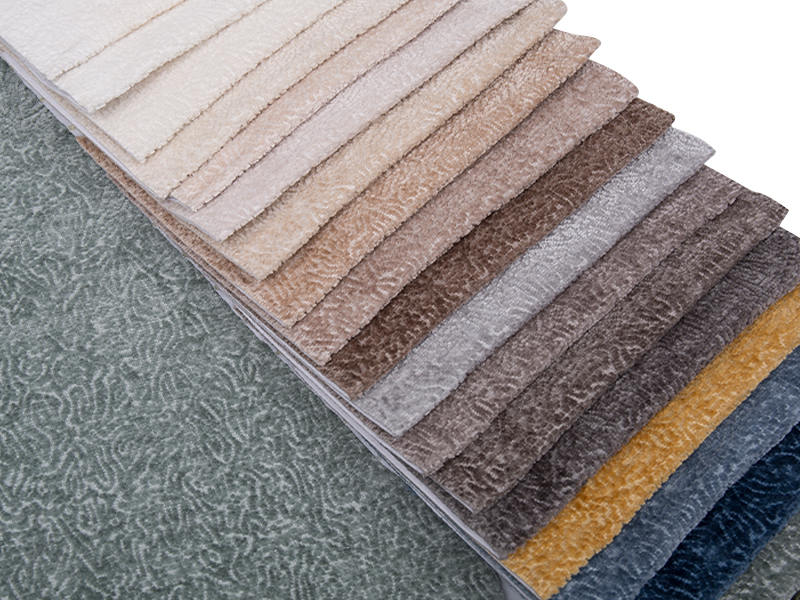Choosing the most durable fabric for a couch is a key decision for any homeowner, balancing aesthetics with the practical demands of daily life. The ideal fabric withstands wear and tear, resists stains, and maintains its appearance over time. This guide explores the top contenders for durability, helping you make an informed choice for your living space.
Understanding Fabric Durability
Before diving into specific fabrics, it's helpful to understand what makes a fabric durable. Key factors include:
-
Fiber Composition: Natural fibers like cotton and linen offer breathability but can be prone to wrinkling and staining. Synthetics like polyester, nylon, and acrylic are engineered for resilience. Blends often combine the best attributes of both.
-
Weave Type: Tightly woven fabrics generally hold up better than loose weaves. A higher thread count often indicates greater density and durability.
-
Fabric Treatment: Many upholstery fabrics are treated with protective coatings to resist stains, water, and fading.
-
Abrasion Resistance: Measured by the Wyzenbeek or Martindale test, this indicates how well a fabric resists wear from rubbing. A higher rating means greater durability. For residential use, a Wyzenbeek rating of 15,000 double rubs is good, while 30,000+ is considered heavy-duty.
Top Contenders for Couch Fabric Durability
1. Microfiber (Polyester)
Why it's durable: Microfiber, typically made from polyester, is a powerhouse of durability. Its tightly woven, synthetic fibers are incredibly resistant to stains, spills, and everyday wear. The dense construction prevents liquids from penetrating quickly, making it easy to blot spills. It's also resistant to fading and pilling.
Best for: Homes with children, pets, or high-traffic areas.
Considerations: While durable, some microfibers can attract pet hair due to static.
2. Canvas (Cotton or Cotton Blends)
Why it's durable: Known for its robustness and strength, canvas is a plain-woven fabric that's exceptionally tough. When made from cotton, it offers a natural feel while still being highly resistant to tears and snags. Treated versions can be water and stain-resistant.
Best for: Casual, high-traffic living rooms; homes seeking a natural yet sturdy option.
Considerations: Can be stiff initially but softens with use. May wrinkle more than synthetics.
3. Denim
Why it's durable: Just like your favorite pair of jeans, denim upholstery is incredibly strong and long-lasting. Its twill weave contributes to its excellent tear resistance and ability to withstand heavy use. It ages well, often developing a desirable patina over time.
Best for: Lofts, casual spaces, or homes embracing an industrial or laid-back aesthetic.
Considerations: Can be heavy and may fade over time, which some consider a desirable characteristic.
4. Leather
Why it's durable: Full-grain or top-grain leather is one of the most durable and long-lasting upholstery materials available. It's highly resistant to punctures, tears, and spills (when properly treated). Over time, leather develops a unique patina that enhances its beauty. It's also relatively easy to clean.
Best for: Luxury homes, formal living spaces, or any setting where longevity and classic style are prioritized.
Considerations: Higher upfront cost. Requires occasional conditioning to prevent drying and cracking.
5. Nylon
Why it's durable: Often blended with other fibers for added strength, nylon is a fully synthetic fiber renowned for its exceptional elasticity and abrasion resistance. It's one of the strongest upholstery fibers, making it ideal for high-wear areas.
Best for: Very high-traffic areas; commercial settings; often used in blends to boost durability.
Considerations: Can be prone to static and fading if not treated.
6. Olefin (Polypropylene)
Why it's durable: Olefin is a synthetic fiber known for its remarkable resistance to moisture, chemicals, and fading. It's often used in outdoor furniture due to its ability to withstand harsh elements, making it an excellent choice for indoor durability as well. It's also resistant to pilling and mildew.
Best for: Homes with heavy use, outdoor-adjacent spaces, or environments prone to spills and moisture.
Considerations: Can have a slightly less soft feel than some other fabrics.
Factors to Consider When Choosing
-
Lifestyle: Do you have kids, pets, or frequently host gatherings? Your daily activities will heavily influence the best fabric choice.
-
Maintenance: How much effort are you willing to put into cleaning and upkeep? Some sofa fabrics are more forgiving than others.
-
Aesthetics: While durability is key, the fabric should also complement your home's decor and your personal style.
-
Budget: Durable fabrics can sometimes come with a higher price tag, but the longevity often justifies the investment.
Final Thoughts
While there's no single "most durable" fabric for every situation, microfiber (polyester), heavy-duty cotton canvas/denim, and leather consistently rank highest for their ability to withstand the rigors of daily life. For ultimate resilience, look for fabrics with high Wyzenbeek ratings (30,000+ double rubs) and consider those with stain-resistant treatments. By carefully evaluating your needs and these durable options, you can select a couch fabric that will look great and stand the test of time.



 Language
Language  English
English 中文简体
中文简体 عربى
عربى





















